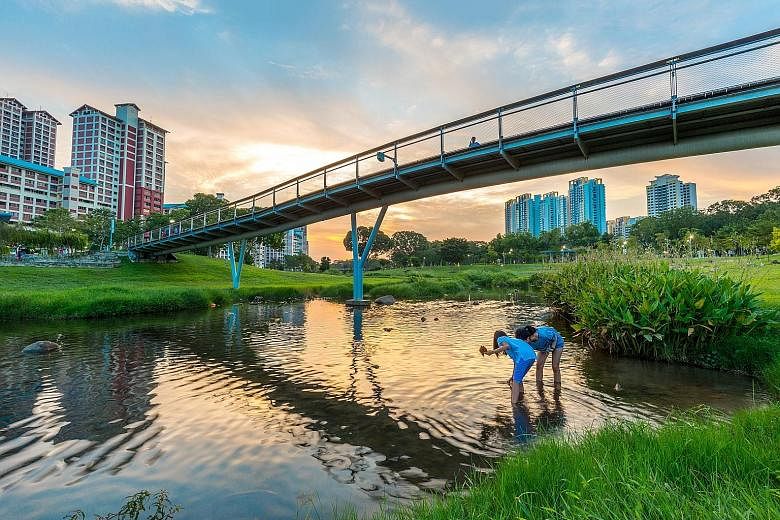Strategic thrust #1: Design as part of the national skill set
To create a nation that appreciates and has an aptitude for good design, current and future workforces need to develop the necessary skills. The seeds of design have to be sown at a young age, the design workforce has to be trained, and the design community has to continually strive to better itself.
RECOMMENDATIONS:
Start young
An integrated curriculum of enrichment programmes centred on design should be introduced from pre-school to secondary school to get young Singaporeans comfortable with experimenting and creative problem solving.
For the young ones, this could include programmes that encourage creativity, learning-by-doing, crafting and storytelling.
At higher levels, students would learn to apply design thinking to real world challenges.
Industry-ready designers
The multi-disciplinary aspects of design education should be strengthened, and business modules added to design diploma and degree courses. DesignSingapore Council's existing scholarship programmes should also be extended to candidates from ITEs, polytechnics and universities.
Continual learning
Continual professional development and accreditation programmes should be introduced.
Following the successful launch of an accreditation programme for landscape architects by the Singapore Institute of Landscape Architects, there are plans to extend accreditation to areas such as interior design and urban design.
Strategic thrust #2: Expand the role of design in businesses and government
Businesses and the Government both need to strengthen their design capabilities so they can better respond to an operating environment that is rapidly changing, both locally and globally.
Using a people-centric approach to products, services as well as policies will make them more robust and relevant.
RECOMMENDATIONS:
Govt-wide Design Promotion Unit
Establishing a Design Promotion Unit will enable the Government to provide a more comprehensive range of assistance to businesses that intend to scale up their use of design for growth.
This assistance could take the form of facilitating collaborations between companies, design firms and research institutes.
Design thinking in policymaking
People-driven design thinking could help create policies and services that are more user-friendly and intuitive for citizens.
Key national initiatives, including existing ones like Smart Nation, which drives IT adoption, should draw on design processes and expertise to affect citizens' behaviour and mindsets.
Strategic thrust #3: Strengthen the competitiveness of design firms
DesignSingapore Council should play a stronger role in helping small design firms scale up.
It can create the infrastructure for them to enjoy economies of scale and encourage them to create proprietary offerings and intellectual property (IP).
RECOMMENDATION:
Shared services and expansion opportunities
Small Singapore-based design firms could benefit from access to shared services such as public relations, human resources, accounting and IP management.
They would also stand to gain from interim workspaces and networks in priority overseas markets. Such advantages would provide the economies of scale that would give them an added edge.
Physical and digital "clustering" of such design firms could also foster collaboration and co-creation within the industry.
Strategic thrust #4: Bring design into communities
As more people participate in co-designing their environments, they will feel a greater sense of pride and belonging. Neighbourhoods, in turn, will become more distinctive, and become spaces that communities love and strive to improve.
RECOMMENDATIONS:
Getting hands-on with design
Citizens and residents should be given easy access to design activities like exhibitions and public talks, by bringing such events into community centres, regional libraries and shopping malls.
Businesses and the Government could also engage citizens in co- creating better daily living experiences through design by equipping them with the know-how to participate.
Celebrating success
Design highpoints and role models in Singapore should be celebrated and publicised through success stories, trails and precincts, allowing Singapore to evolve into a living "design museum".
Strategic thrust #5: Develop the Singapore design brand
Singapore's creative side needs to become a distinctive part of the Singapore brand, complementing everything else the nation is already known for, including efficiency, innovation and economic success.
RECOMMENDATIONS:
Put Singapore's best foot forward
The Singapore Design Week should be expanded into a premier international design festival, with a focus on Asia. Its thought leadership offerings could be increased, including through design-driven symposiums and business-focused conferences.
Meanwhile, successful and emerging Singaporean design talent should be given the spotlight at major international trade fairs and design shows.
Leave a distinctive mark
The Singapore Good Design Mark (SG-Mark), which recognises well- designed products and solutions, should be developed to become the regional standard for well-designed products and services.

